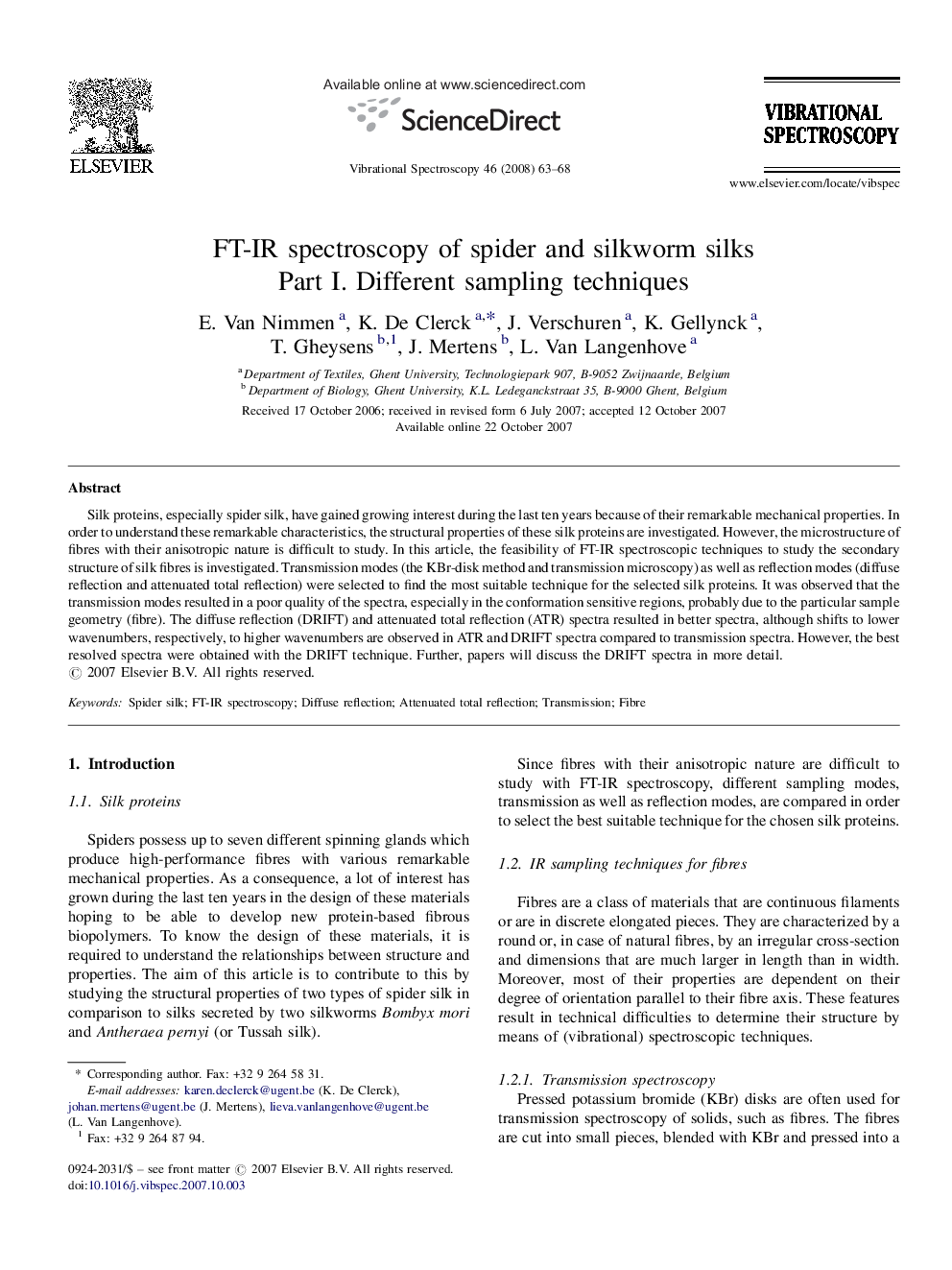| Article ID | Journal | Published Year | Pages | File Type |
|---|---|---|---|---|
| 1250057 | Vibrational Spectroscopy | 2008 | 6 Pages |
Silk proteins, especially spider silk, have gained growing interest during the last ten years because of their remarkable mechanical properties. In order to understand these remarkable characteristics, the structural properties of these silk proteins are investigated. However, the microstructure of fibres with their anisotropic nature is difficult to study. In this article, the feasibility of FT-IR spectroscopic techniques to study the secondary structure of silk fibres is investigated. Transmission modes (the KBr-disk method and transmission microscopy) as well as reflection modes (diffuse reflection and attenuated total reflection) were selected to find the most suitable technique for the selected silk proteins. It was observed that the transmission modes resulted in a poor quality of the spectra, especially in the conformation sensitive regions, probably due to the particular sample geometry (fibre). The diffuse reflection (DRIFT) and attenuated total reflection (ATR) spectra resulted in better spectra, although shifts to lower wavenumbers, respectively, to higher wavenumbers are observed in ATR and DRIFT spectra compared to transmission spectra. However, the best resolved spectra were obtained with the DRIFT technique. Further, papers will discuss the DRIFT spectra in more detail.
